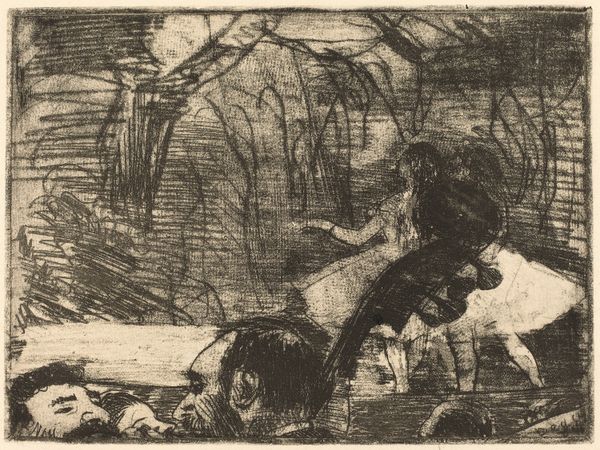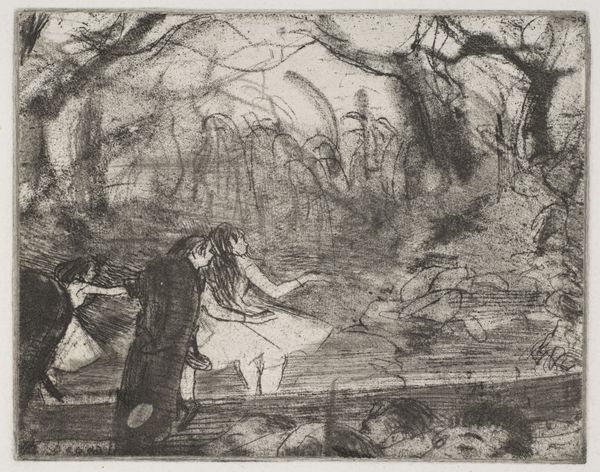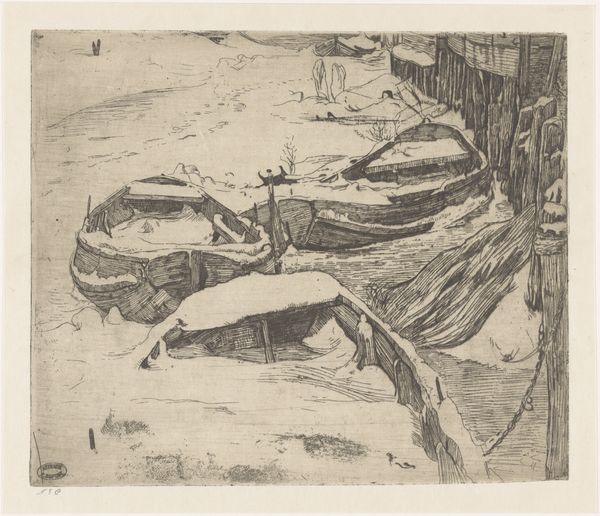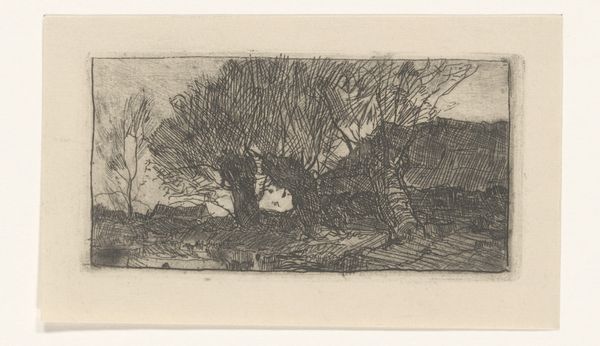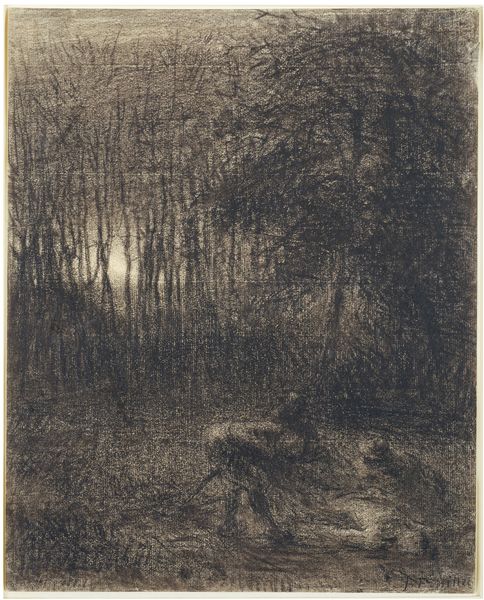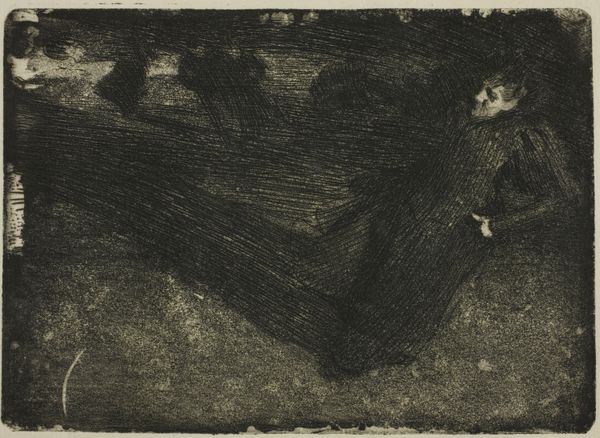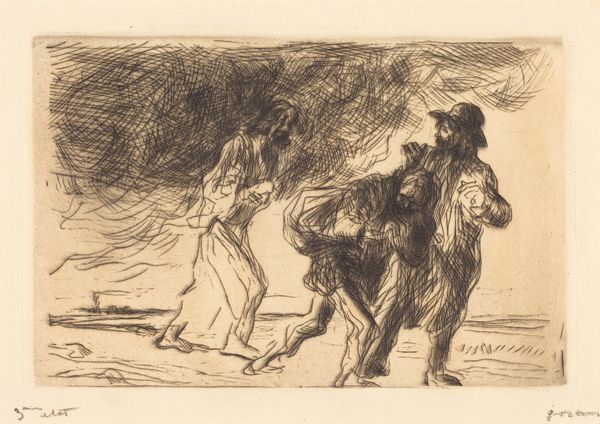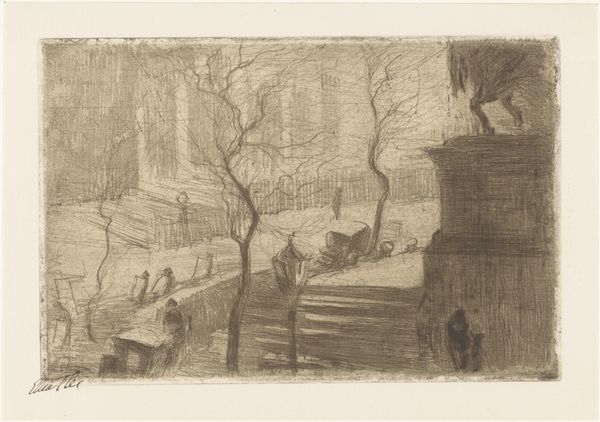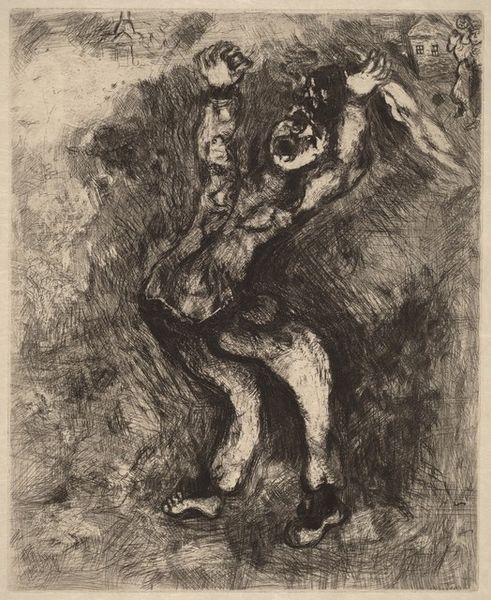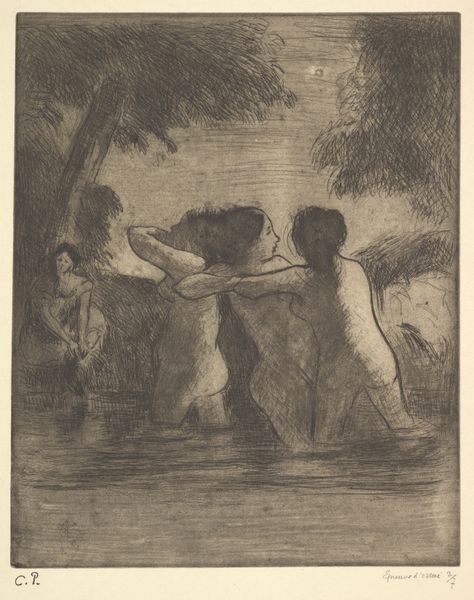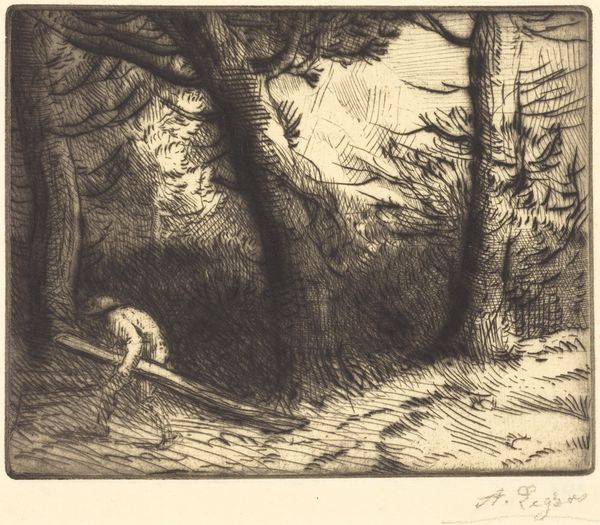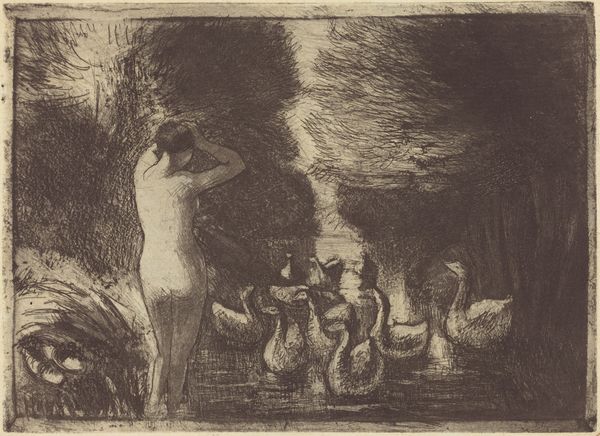
print, engraving
# print
#
impressionism
#
landscape
#
figuration
#
genre-painting
#
engraving
Dimensions: 265 mm (height) x 352 mm (width) (bladmaal), 120 mm (height) x 159 mm (width) (plademaal)
Curator: What strikes you first about this print, "On Stage," by Edgar Degas? It dates back to 1877 and comes to us from the Statens Museum for Kunst. Editor: A certain intimacy, though rendered in stark tones. The faces in the lower left look crumpled, worn—the opposite of what I’d expect backstage. Curator: That’s astute. The etching technique yields an immediacy. We see Degas capturing a specific social environment: the world of the ballet and the dynamics between the dancers and the men around them. Editor: And that contrast is echoed by the looming figure of the black bow. It casts a shadow on the dancer, but the bow also dominates. Bows themselves have signified formality and grace for ages; I find its scale jarring here, unsettling the performance taking place behind. Curator: Precisely. The Impressionists, Degas included, were documenting modern life. Beyond aesthetics, what can Degas tell us about the societal power structures in 19th-century ballet? Editor: Look how much emphasis he placed on those masculine faces down front; the artist hints at a possible dynamic of older money exerting its presence in a younger art form. They seem very much apart from the graceful innocence and lightness associated with the dance itself. Curator: You are picking up on how art reflects the realities of its time, right down to how funding dictates production! I would add that prints democratize access, a different approach from oils, making these ballet scenes more broadly available to viewers in the burgeoning bourgeois art market of Paris. Editor: Very true! Prints could travel easier as well; I now read these dark and smudged figures more sadly as representatives of their era, struggling to be seen amongst such talent in a landscape both real and illusionary. Curator: It is thought-provoking to think about what endures as art navigates its ever-changing social and financial context. Editor: Agreed. There are ever-changing visual symbols and meanings hidden here in plain sight.
Comments
No comments
Be the first to comment and join the conversation on the ultimate creative platform.
